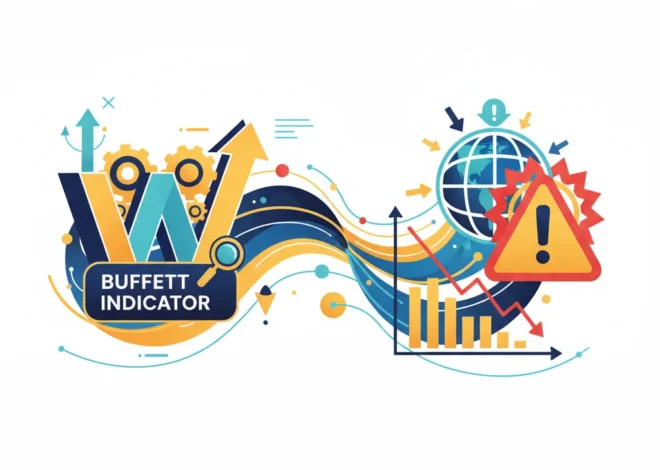
The Matcha Manifesto: Why Modern Finance Needs an Artisanal Overhaul
In the fast-paced world of finance, speed is often king. Algorithms execute trades in microseconds, deals are closed in whirlwind sprints, and the pressure for quarterly returns can eclipse the pursuit of long-term value. But what if the secret to better investing, more stable markets, and a healthier economy lies not in a supercomputer, but in a simple, meticulously prepared bowl of matcha tea?
This surprising connection was elegantly proposed in a letter to the Financial Times by Raphael Chow, co-founder of Brut Tea. Chow draws a powerful parallel between the “smoke and mirrors” often found in financial deal-making and the difference between cheap, industrial-grade matcha versus its ceremonial-grade counterpart. The former is a bitter, chalky imitation; the latter is a complex, vibrant, and deeply rewarding experience. The difference, he argues, lies entirely in the transparency, care, and integrity of the process.
This analogy is more than just a clever metaphor; it’s a profound critique of a financial system that too often prioritizes opaque complexity over genuine substance. It challenges us—investors, business leaders, and finance professionals—to reconsider the very foundations of how we create and assess value in the modern economy.
The Art of Value: Deconstructing the Matcha Process
To understand the depth of the analogy, one must first appreciate the painstaking journey of ceremonial-grade matcha. It’s a process of patience and precision, where every step is designed to cultivate quality. This stands in stark contrast to the mass-production shortcuts that define so many modern industries, including finance.
- Shade-Growing (Okumidori): Weeks before harvest, the tea plants (tencha) are carefully covered, starving them of direct sunlight. This forces the leaves to overproduce chlorophyll and L-theanine, the amino acid responsible for matcha’s unique umami flavor and calming effects. This is the incubation phase—a protected, deliberate period of development, akin to a startup nurturing an idea away from the harsh glare of market pressures before seeking its Series A.
- Selective Harvesting: Only the youngest, most tender leaves are hand-picked. This selection process is critical; it’s the equivalent of a venture capitalist painstakingly identifying a handful of truly promising companies from a sea of thousands. It’s about quality, not quantity.
- Stone-Grinding: The harvested leaves are steamed, dried, and then slowly ground between granite stones. This process is incredibly slow—it can take an hour to produce a mere 30 grams of matcha. Rushing it with industrial grinders would generate heat, scorching the leaves and destroying their delicate flavor. This is the due diligence phase, where meticulous, unhurried analysis uncovers the true nature of an asset, a stark departure from the high-speed, algorithm-driven trading that dominates today’s stock market.
The result is a vibrant green powder, rich in flavor and benefits. The process is transparent, the quality is undeniable, and the value is inherent. There are no shortcuts, and every step is a testament to the principle that true worth is cultivated, not just manufactured.
The Point of No Return: Why Climate Tipping Points Are Reshaping Global Finance and Investing
Finance’s “Industrial-Grade” Problem
Now, contrast this artisanal approach with the “industrial-grade” practices prevalent in modern finance. The system often seems engineered to create complexity, obscuring the underlying value of assets and making it difficult for even seasoned professionals to navigate.
Consider the “smoke and mirrors” Chow references. This can be seen in Collateralized Debt Obligations (CDOs) packed with subprime mortgages that fueled the 2008 financial crisis, or in Special Purpose Acquisition Companies (SPACs) that raise capital with a blank check, asking investors to trust a future deal that hasn’t been sourced yet. According to a study analyzed by the Harvard Law School Forum on Corporate Governance, the post-merger performance of many SPACs has been overwhelmingly negative, suggesting the hype often outweighs the substance.
This opacity creates a system where the “baristas” of the financial world—the investment bankers, fund managers, and advisors—can command enormous fees for whisking up products whose ingredients are, at best, murky. The focus shifts from the intrinsic quality of the investment to the salesmanship of the intermediary.
To illustrate this divergence, let’s compare the two approaches side-by-side:
| Attribute | The Matcha Method (Artisanal Approach) | Traditional Financial Dealmaking (Industrial Approach) |
|---|---|---|
| Transparency | Full visibility into the process from leaf to cup. Quality is verifiable. | Often opaque, with complex derivatives, jargon, and hidden fees. |
| Process | Slow, deliberate, and focused on cultivating intrinsic value. | Fast-paced, driven by quarterly targets, and focused on transaction volume. |
| Quality Assessment | Based on tangible factors: color, texture, taste, and origin. | Based on abstract models, credit ratings, and market sentiment, which can be flawed. |
| Role of Intermediary | A skilled artisan who enhances the inherent quality of the raw material. | Often a salesperson or packager who profits from complexity and transaction fees. |
| Long-Term Value | Creates a sustainable, high-quality product with lasting appeal. | Can create short-term gains but risks systemic instability and value destruction. |
Fintech: The Stone Mill of the 21st Century Economy
If the problem is a lack of transparency and diligence, then financial technology (fintech) may be the solution. Fintech innovations are acting as the modern equivalent of the stone mill—tools that can break down complex financial products into their fundamental components, allowing for slower, more deliberate analysis without sacrificing efficiency entirely.
One of the most promising technologies in this arena is blockchain. At its core, blockchain is a distributed, immutable ledger. It offers the potential for radical transparency in everything from supply chains to stock market trading. Imagine a world where every transaction in a complex mortgage-backed security is recorded on a blockchain, accessible to regulators and investors alike. The “smoke” would dissipate, and the “mirrors” would shatter. This level of clarity could fundamentally reshape the banking and investing landscape, rewarding substance over obfuscation.
Beyond blockchain, other fintech solutions are already pushing the industry in this direction:
- Democratized Data: Platforms that give retail investors access to institutional-grade data and analytical tools empower them to perform their own “stone-grinding” due diligence.
- AI-Powered Analytics: Artificial intelligence can sift through vast amounts of data to identify red flags and assess long-term viability, automating the meticulous part of the analysis without succumbing to human bias or the pressure for speed.
- Robo-Advisors & Transparent ETFs: Many new financial technology products are built on a foundation of transparency, with clear, low-fee structures and straightforward investing philosophies, a direct challenge to the high-fee, opaque models of traditional wealth management.
The rise of fintech represents a powerful shift. As PwC’s Global FinTech Report highlights, the industry is moving towards a more integrated and collaborative ecosystem. This integration could force traditional institutions to adopt higher standards of transparency to compete, improving the overall health of the global economy.
Decoding the Economy: What a Cryptic Crossword Reveals About Modern Finance
How to Apply the Matcha Mindset to Your Portfolio
This philosophy isn’t just for C-suite executives or Wall Street traders. Every investor can benefit from adopting a more artisanal mindset. It’s a shift from being a passive consumer of financial products to an active, discerning connoisseur of value.
- Look Beyond the “Brand”: Don’t invest in a company or a fund simply because of its name or the hype surrounding it. Just as “matcha-flavored” doesn’t mean it’s real matcha, a popular stock ticker doesn’t guarantee a solid underlying business.
- Understand the “Ingredients”: Read the shareholder letters. Look at the balance sheet. Understand the business model. If you’re investing in a fund, know what’s in it. If you can’t understand it, you probably shouldn’t own it. This is your due diligence—your personal stone-grinding process.
- Embrace Patience: True value, like shade-grown tencha, takes time to cultivate. Resist the urge for constant trading. A long-term, buy-and-hold strategy focused on high-quality, well-understood businesses is the investor’s equivalent of patiently waiting for the perfect harvest.
- Demand Transparency: Whether it’s from your financial advisor or the companies you invest in, demand clarity on fees, strategy, and performance. Support businesses and platforms that operate with integrity.
Wall Street's Paradox: Record Bank Profits Meet Stark Bubble Warnings
Conclusion: Brewing a Better Financial Future
Raphael Chow’s simple analogy of matcha and finance serves as a powerful reminder that in any complex system, the integrity of the process determines the quality of the outcome. For too long, the financial industry has benefited from a complexity that confuses rather than clarifies, often at the expense of the end investor and the stability of the wider economy.
By embracing the principles of the matcha method—patience, transparency, a relentless focus on quality, and meticulous diligence—we can begin to build a more resilient and trustworthy financial system. It requires a fundamental shift in mindset, from chasing fleeting, high-speed gains to cultivating lasting, sustainable value. The future of finance may not be found in faster algorithms, but in the timeless wisdom of a well-brewed cup of tea.


